- Home›
- Healthy Living›
- How To Do Sumo Deadlifts: Variations, Benefits, And Common Mistakes
How To Do Sumo Deadlifts: Variations, Benefits, And Common Mistakes
By: Priyanka Maheshwari Sat, 16 Sept 2023 3:04:03
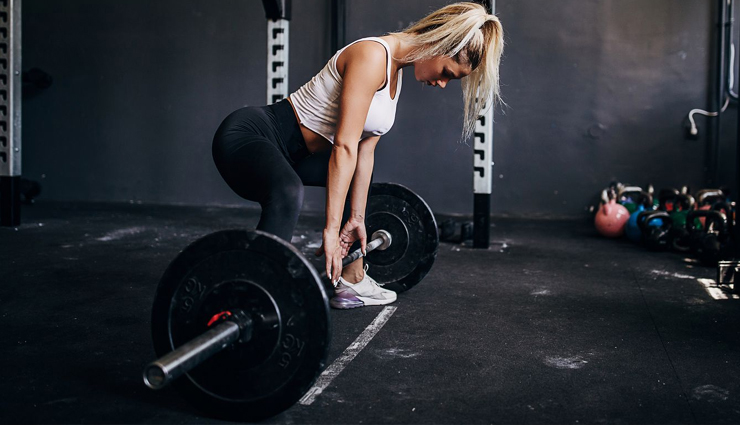
The sumo deadlift is a powerful and effective strength training exercise that targets multiple muscle groups while offering a range of benefits. Originating from powerlifting, the sumo deadlift has gained popularity among athletes, bodybuilders, and fitness enthusiasts for its ability to build strength, promote muscle growth, and improve overall physical fitness.
In this comprehensive guide, we will explore the proper technique for performing sumo deadlifts, delve into various sumo deadlift variations to add diversity to your workout routine, and highlight the numerous advantages this exercise offers. Additionally, we will discuss common mistakes to avoid, ensuring that you maximize the benefits of sumo deadlifts while minimizing the risk of injury.
Whether you're a seasoned lifter looking to refine your sumo deadlift form or a newcomer eager to embrace the world of strength training, this guide will provide you with the knowledge and insights needed to master this fundamental exercise and reap its rewards. Let's dive into the world of sumo deadlifts, uncovering the variations, benefits, and crucial techniques to ensure your success in the gym.

What Are Sumo Deadlifts?
Sumo deadlifts are a type of deadlift exercise performed in weightlifting and powerlifting. They are named "sumo" because the starting position of the lift resembles the wide stance of a sumo wrestler. Sumo deadlifts primarily target the muscles of the lower body, particularly the hamstrings, glutes, and quadriceps, but they also engage the lower back, core, and upper body muscles.
Here's how to perform a sumo deadlift:
Setup:
- Stand with your feet wider apart than your shoulder width. Your toes should point outward at about a 45-degree angle.
- Place a barbell in front of you, close enough that it touches your shins.
- Bend at your hips and knees to lower your torso, keeping your back straight. Grip the barbell with both hands inside your knees using an overhand or mixed grip (one hand overhand, one hand underhand).
Lift:
- Take a deep breath and engage your core.
- Push through your heels, straightening your hips and knees to lift the barbell off the ground. Keep the barbell close to your body as you lift it.
- As you stand up, extend your hips fully while keeping your chest up and your back straight. Squeeze your glutes at the top of the movement.
- Reverse the movement by bending at your hips and knees to lower the barbell back to the ground, maintaining a controlled descent.
Important tips for performing sumo deadlifts safely and effectively:
- Keep your back straight and maintain a neutral spine throughout the movement to prevent injury.
- Engage your core muscles to stabilize your spine.
- Make sure your weight is evenly distributed across your feet.
- As you lift the barbell, focus on using your legs and hips to generate the force, rather than relying solely on your lower back.
- Use proper form and start with lighter weights to learn the technique before progressing to heavier loads.
- Consult a fitness professional or coach if you're new to deadlifting to ensure you're using proper form.
What Muscles Do Sumo Deadlifts Work?
Sumo deadlifts are a compound exercise that engages multiple muscle groups throughout the body. While they primarily target the lower body, particularly the muscles of the legs and hips, they also involve the upper body and core. Here are the key muscles worked during sumo deadlifts:

Hamstrings
The hamstrings, a group of muscles at the back of the thigh, are heavily engaged during the lifting phase of sumo deadlifts. They play a crucial role in hip extension and assist in straightening the hips.
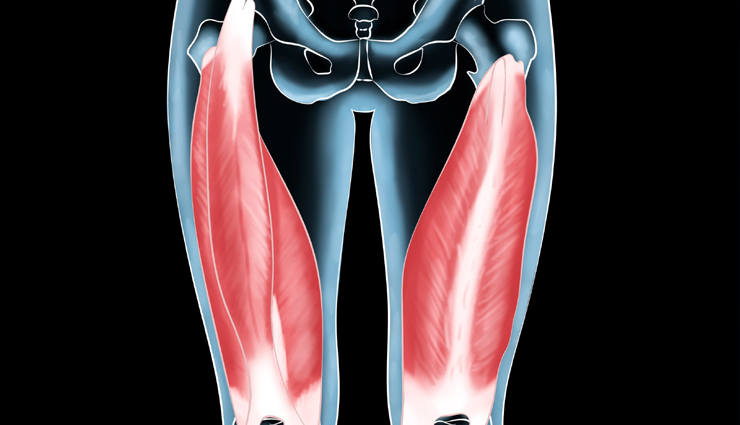
Quadriceps
The quadriceps, located at the front of the thigh, are used to extend the knee joints during the upward phase of the sumo deadlift. They help with the initial push off the floor.

Gluteus Maximus
The glutes, specifically the gluteus maximus, are the primary hip extensor muscles and are heavily activated during the lifting phase. They play a significant role in driving the hips forward to lift the weight.

Adductors
The inner thigh muscles, or adductors, are highly engaged because of the wide stance in sumo deadlifts. They help stabilize the legs and hips during the lift.

Erector Spinae
These muscles run along the spine and are crucial for maintaining an upright posture and stabilizing the spine during the entire movement, especially during the lifting phase.

Core Muscles
The core muscles, including the abdominals and obliques, are engaged to stabilize the spine and prevent excessive spinal flexion or extension during the lift.

Upper Body
While the primary emphasis of sumo deadlifts is on the lower body, the upper body muscles are also involved to some extent. The traps (trapezius), lats (latissimus dorsi), and rhomboids are used to maintain scapular retraction and proper upper body positioning.
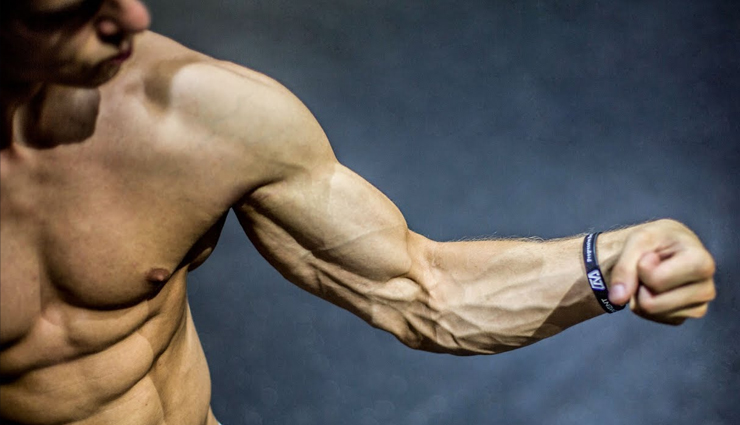
Forearms and Grip
Grip strength is essential in sumo deadlifts, as you need to maintain a secure hold on the barbell. This engages the muscles of the forearm, such as the flexors and extensors.
Sumo deadlifts are a comprehensive exercise that targets both the lower and upper body, making them an effective compound movement for building overall strength and muscle mass. Proper form and technique are crucial to ensure that these muscles are worked efficiently while minimizing the risk of injury.

How To Do Sumo Deadlifts
To perform sumo deadlifts correctly, follow these step-by-step instructions:
Equipment You'll Need:
- A barbell
- Weight plates (adjust the weight based on your fitness level)
- Proper footwear for lifting (e.g., flat-soled shoes or lifting shoes)
Steps:
Setup:
- Approach the barbell with your feet placed wider than shoulder-width apart. Your toes should be turned out at approximately a 45-degree angle. The barbell should be positioned over the middle of your feet.
- Make sure your shins are close to the barbell without touching it.
- Bend at your hips and knees to lower your torso while maintaining a neutral spine. Your chest should be up, and your back should be straight.
- Reach down and grip the barbell with both hands inside your knees. You can use either a double overhand grip (both palms facing you) or a mixed grip (one palm facing you, one palm facing away). Your grip should be just outside your knees.
Lift:
- Take a deep breath, engage your core muscles, and brace your abdomen.
- Push through your heels and extend your hips and knees simultaneously to lift the barbell off the ground. Keep it close to your body throughout the movement.
- As you stand up, make sure your chest remains up, and your back stays straight. Avoid rounding your back.
- Fully extend your hips at the top of the movement by squeezing your glutes. Stand upright with your shoulders back and chest proud.
Lowering the Bar:
- To lower the barbell back to the ground, bend at your hips and knees while keeping your back straight. The barbell should follow a vertical path down your body.
- Once the barbell reaches the ground, you've completed one repetition.
Tips for Proper Form:
- Maintain a neutral spine throughout the lift. Avoid rounding your back, as this can lead to injury.
- Keep your weight balanced over the middle of your feet.
- Engage your lats by pulling your shoulder blades down and back before lifting the bar.
- Your hips should start lower than your shoulders in the setup position.
- Ensure that your knees track in line with your toes during the lift.
- Use proper breathing techniques: Inhale before lifting, hold your breath during the lift, and exhale at the top of the movement or after returning the bar to the ground.
Safety Precautions:
- Start with a weight that you can lift with proper form, and gradually increase the weight as you become more comfortable with the exercise.
- If you're new to sumo deadlifts or strength training in general, consider seeking guidance from a qualified fitness professional to ensure you're using correct form and technique.
Sumo Deadlift Variations
Variations of the sumo deadlift can add diversity to your strength training routine and target specific muscle groups or lift variations. Here are some sumo deadlift variations:

Sumo Deadlift High Pull:
This variation combines the sumo deadlift with an explosive movement, emphasizing the use of the hips and traps. After lifting the bar, pull it up towards your chest by bending your elbows. It's often used in CrossFit and Olympic weightlifting.

Deficit Sumo Deadlift:
In this variation, you stand on a raised surface (like weight plates or a low box) while performing the sumo deadlift. It increases the range of motion and places extra emphasis on the hamstrings and glutes.

Paused Sumo Deadlift:
Pause for a few seconds at a specific point in the lift, typically just above the ground or at knee height. This variation helps improve strength off the floor or at various sticking points in the lift.

Single-Leg Sumo Deadlift (Bulgarian Deadlift):
Stand on one leg while lifting a dumbbell or kettlebell in a sumo stance with the opposite hand. This variation improves balance, stability, and unilateral leg strength.
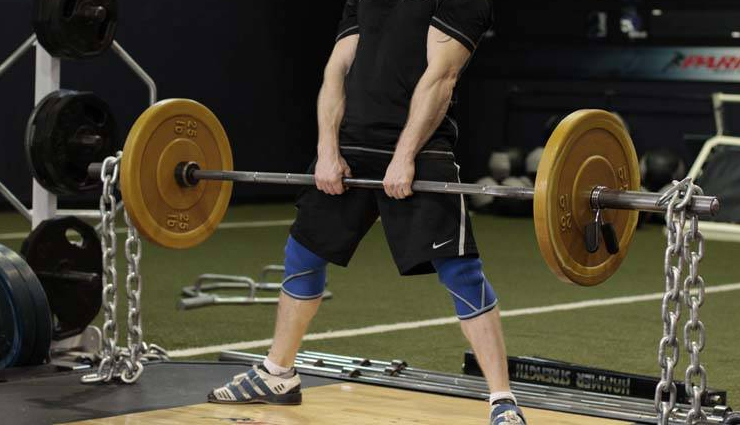
Sumo Deadlift with Chains or Bands:
Adding chains or resistance bands to the barbell increases the resistance as you lift, making the exercise more challenging, especially at the top of the movement.

Sumo Romanian Deadlift (Stiff-Legged Deadlift):
Perform the sumo deadlift with slightly bent knees and minimal hip flexion, focusing on stretching and engaging the hamstrings and lower back muscles. It's an excellent exercise for targeting the hamstrings and glutes.

Sumo Deadlift to Row:
After lifting the barbell, add a rowing motion by pulling the barbell to your lower ribcage or waist. This variation engages the upper back muscles and the lats.
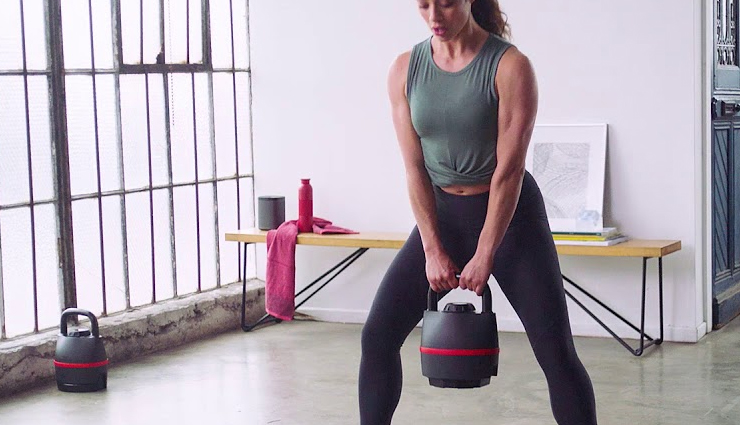
Sumo Deadlift with Dumbbells or Kettlebells:
Instead of using a barbell, you can perform sumo deadlifts with dumbbells or kettlebells for a different grip and balance challenge.

Sumo Deadlift with Pause at the Top:
After fully extending your hips at the top of the lift, pause for a second or two before lowering the bar. This variation increases time under tension and can help with lockout strength.

Sumo Deadlift with Isometric Holds:
Incorporate isometric holds at various points during the lift (e.g., just off the ground, at knee height) to strengthen specific portions of the lift.

Advantages of Sumo Deadlifts:
They Represent a Compound Movement:
Sumo deadlifts fall into the category of compound exercises, which engage various muscle groups simultaneously. These lifts effectively target a wide range of muscles, including the glutes, quadriceps, and both the lower and upper back. They demand increased energy expenditure during the movement, making them highly effective for promoting lean tissue growth, enhancing overall strength, and facilitating muscle development.
They Offer Spinal-Friendly Benefits:
Unlike conventional deadlifts, sumo deadlifts place less stress on the lumbar spine. This is due to the near-upright positioning of the back, which receives direct support from the legs and core throughout the lift. By transferring the load to the legs, sumo deadlifts reduce the risk of potential back injuries.
They Foster Muscle Growth and Enhanced Strength:
Incorporating sumo deadlifts correctly into your workout routine makes them an ideal choice for building muscle mass and strength. These lifts primarily target the quadriceps, glutes, hamstrings, and calves, effectively developing leg and back muscles capable of handling heavier loads. Additionally, practicing sumo deadlifts can lead to improvements in conventional deadlift performance, thereby enhancing overall lifting capabilities.
They Enhance Posture:
Sumo deadlifts are particularly beneficial for individuals with unique bone structures that may not suit traditional deadlifts or those dealing with flexibility issues. The exercise provides a high degree of freedom and efficiency while concurrently working to improve posture and lower back strength. This is achieved through the wider stance and the requirement for a strong thoracic extension during the exercise.
They Target the Quadriceps and Glutes More Effectively:
The wide stance and specific leg and foot positioning of sumo deadlifts result in better targeting of the quadriceps and glutes compared to standard deadlifts. Research indicates that these lifts significantly increase the signals between the upper leg muscles and motor neurons. Consequently, sumo deadlifts are ideal for those looking to focus on these muscle groups. If you're new to this exercise, consider starting with resistance training to prepare your body and gradually work up to sumo deadlifts.
While sumo deadlifts offer numerous benefits, it's essential to perform them correctly to fully reap these advantages. Understanding and avoiding common mistakes can help maximize the benefits of this exercise.

Most Common Mistakes In Sumo Deadlifts
Sumo deadlifts, like any exercise, can be performed incorrectly, which may lead to reduced effectiveness and an increased risk of injury. Here are some of the most common mistakes made during sumo deadlifts:
Improper Setup Position:
Mistake: Feet are not positioned wide enough or toes are not sufficiently turned out.
Correction: Set your feet wider than shoulder-width apart and turn your toes outward at approximately a 45-degree angle to match your stance.
Rounding of the Lower Back:
Mistake: Allowing the lower back to round or flex during the lift.
Correction: Maintain a neutral spine throughout the movement, ensuring your lower back stays flat and your chest is up. Engage your core muscles for stability.
Starting with the Hips Too High:
Mistake: Beginning the lift with hips positioned too high, resembling a conventional deadlift stance.
Correction: Lower your hips to a point where they are slightly below your shoulders, allowing for a more advantageous starting position.
Excessive Knee Movement:
Mistake: Allowing the knees to cave inward during the lift.
Correction: Keep your knees in line with your toes and prevent them from collapsing inward by engaging your glute muscles and pushing your knees outward.
Not Keeping the Bar Close:
Mistake: Allowing the barbell to drift away from the body as it is lifted.
Correction: Keep the barbell close to your legs throughout the entire lift to maintain a vertical bar path.
Bouncing the Bar:
Mistake: Allowing the bar to bounce off the ground between repetitions.
Correction: Maintain control over the bar at all times. Do not rely on momentum or bouncing to complete the lift.
Neglecting Proper Breathing Technique:
Mistake: Inadequate breathing control or not using the Valsalva maneuver to brace the core.
Correction: Take a deep breath and brace your core before lifting. Hold your breath during the lift and exhale at the top or after lowering the bar.
Using Incorrect Grip:
Mistake: Using an improper grip that may lead to the barbell rolling out of your hands.
Correction: Use a grip that is comfortable for you, such as a double overhand grip or a mixed grip (one palm facing you, one palm facing away).
Lifting with Poor Hip Extension:
Mistake: Failing to fully extend the hips at the top of the lift.
Correction: Squeeze your glutes and fully extend your hips when reaching the standing position.
Not Maintaining Tension:
Mistake: Relaxing at the top or bottom of the lift, losing tension in the muscles.
Correction: Keep tension in your muscles throughout the entire range of motion, both when lowering and lifting the barbell.





